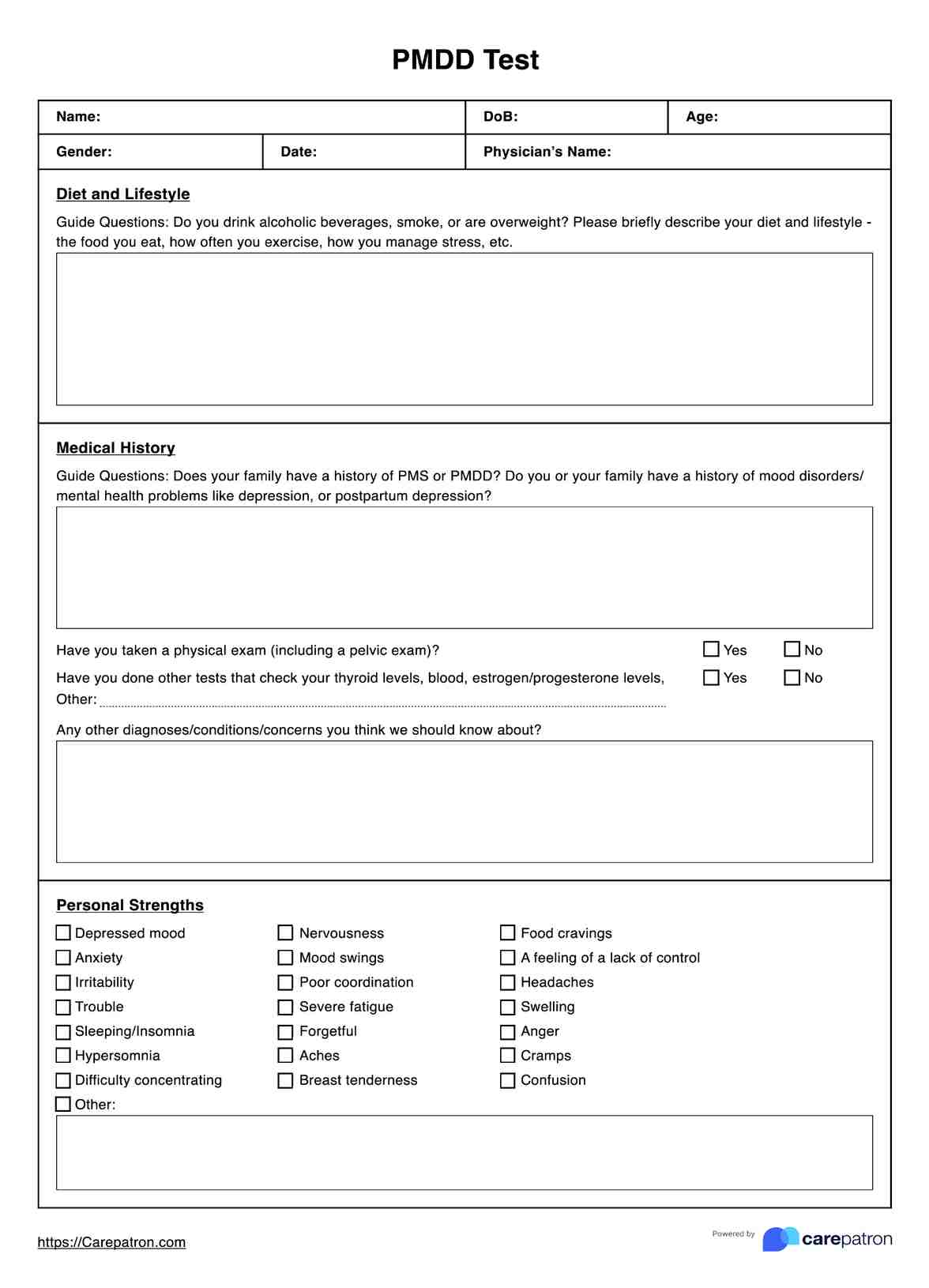Interpretation of the individual scores is dependent on the patient’s understanding of the symptom scoring. The scores and their corresponding severity are written down in the table on the template. Generally, the higher the number, the more painful the symptom is and the more it interferes with daily life.

PMDD Test
Utilize and download this PMDD test to track your patient’s symptoms and their severity to determine if they have a premenstrual dysphoric disorder.
PMDD Test Template
Commonly asked questions
Aside from gathering information on one’s medical history, the PMDD test we’ve created measures the pain severity of the symptoms the patient is experiencing.
One can begin the process of administering the PMDD test during the first consultation. However, unlike other tests, it can only be deemed finished if the patient fills up the 30 or 31 days religiously and comes back for a consultation where you, the practitioner, and the patient go over the results.
EHR and practice management software
Get started for free
*No credit card required
Free
$0/usd
Unlimited clients
Telehealth
1GB of storage
Client portal text
Automated billing and online payments











